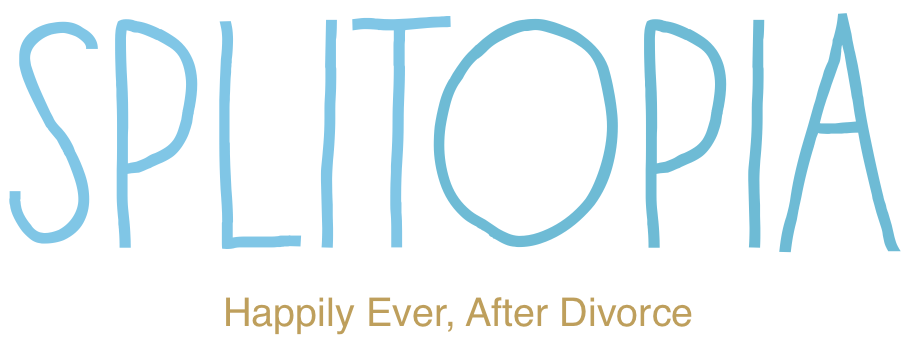Forget Therapy: 5 Ways Dancing Can Boost Your Mood
/For some people, dealing with the details around divorce can feel like entering some kind of Logistical Olympics, and trying to stay in front while a hurricane churns up the shore. You know you probably should see a therapist, perhaps, or get yourself to the gym. But who has time to commit to “self-care” on top of everything else that needs to be done?
We say: don’t bother! Rather than assigning yourself more “work” to do to stay healthy during this difficult time, go dancing instead.
Dancing doesn’t feel like a chore. It provides many of the same benefits as therapy. And it does more for mental and physical health than other (more boring) forms of exercise.
We’ve all had the experience of getting swept up in a group dance moment, jumping up and down with all our friends at the high school prom or shaking our hips with an aging aunt while doing the Macarena at a cousin’s wedding. We feel like we should be embarrassed, but actually, we’re having a ridiculous amount of fun.
Here are five ways dancing can be the best medicine:
1. Dancing can help you think more clearly.
It’s easy to feel overwhelmed in divorce, your head in the clouds, unsure where you left your keys, or laundry, or legal documents. Ballroom and social dances such as swing, salsa, the Cumbia, foxtrot and tango require memorizing steps and making many micro decisions simultaneously that involve coordination, memory, focus, and improvisation. This mental and physical “work” actually builds up your brain’s neural pathways. You're getting smarter on the dance floor, which puts you in a better, more mentally agile position to respond to the new challenges of your life post-split.
2. Dancing keeps weight gain at bay.
You’ve been hiding out at home with your ice cream and remote control, and now you’ve put on weight you want to lose? Dieting is no fun, but dancing is. Like other forms of exercise, dancing burns calories, but because it’s actually fun, social, and personally expressive, it takes you out of your negative rumination and can lead to staying on the dance floor for hours. “Because it’s so fun, you want to stay that long,” says 20-something recent divorcee Meagan Mason, who took to blues dancing as a form of “therapy” after divorce. How many calories can you burn? According to Fitness Blender, about 400 with an hour of salsa, 300 - 550 calories with swing, and up to 750 calories moshing.
3. Dancing builds social bonds.
A slew of studies show that social ties correlate with health and well-being. Divorce can shake up your social circle. Dancing lets you shake your way to a new one. It’s an easy way to be among others, and reduce the feeling of isolation that can accompany so many of us in divorce. As NPR’s Social Science Correspondent Shankar Vedantam has reported, synchronized dancing taps into our ancient need to belong to a group for survival. “Dancing together, especially in synchrony, can signal that you are actually simpatico with lots of other people. The researchers think this is why so many cultures have synchronized dancing and why it might have health benefits.”
4. You can’t feel depressed when doing a line dance around the swimming pool in a Pina colada-induced haze.
Researchers from Selcuk University in Turkey divided 120 men and women into two groups. One group danced three times a week for 12 weeks. The other group? No dancing. After the 12-week period, the researchers found that the dancing group’s levels of depression “meaningfully decreased.” Persistent depression can lead to negative health outcomes; dancing can bounce you out of a rut before it gets too deep.
5. Dancing can help with trauma.
The field of Dance and Movement Therapy (DMT) uses dance to address autism, Alzheimer’s, eating disorders—and trauma. As the American Dance Therapy Association puts it, “Ritualized group movements expressing mourning, frustration, and anger, in addition to joy and laughter, allow for the release of these emotions and group bonding.” Group dancing in particular also raises your pain threshold, as a recent study by Oxford University’s Department of Experimental Psychology showed. What better way to deal with the pain of divorce than, well, not feel it for a while?
There are so many types of dance—from line dancing and pole dancing to Zumba and ballroom—and a variety of formats—from group classes to private lessons to freestyling in clubs—that you’re sure to find a form and setting that appeals to you.
Ready to get moving? Here are some places to try:
- Findadancestudio.com
- Takelessons.com
- Danceclassfinder.com
- Learntodance.com
- Find a ZUMBA class
- Find a POLE DANCING class
- Wheresthedance.com (Search for establishments that offer clogging, line dancing, square dancing, and more.)
- National Dance Council of America (The official governing council of dance and dancesport in the USA).
***
Laura Brienza is the author of two nonfiction books for Globe Pequot Press: Discovering Vintage Washington, DC and New York's Historic Restaurants, Inns, and Taverns. Her writing has also appeared in Flavor & The Menu, Feminine Collective, 1st Amendment Media/IndyBuild, The Date Diaries, and she is a Weekend Reporter for Obsessed With Everything. Her plays have been produced and developed by The Lark Play Development Center, the Kennedy Center, and Luna Stage, where her most recent play Old Love New Love was hailed for its "sharp writing" and "poignant moments" by The New York Times.























